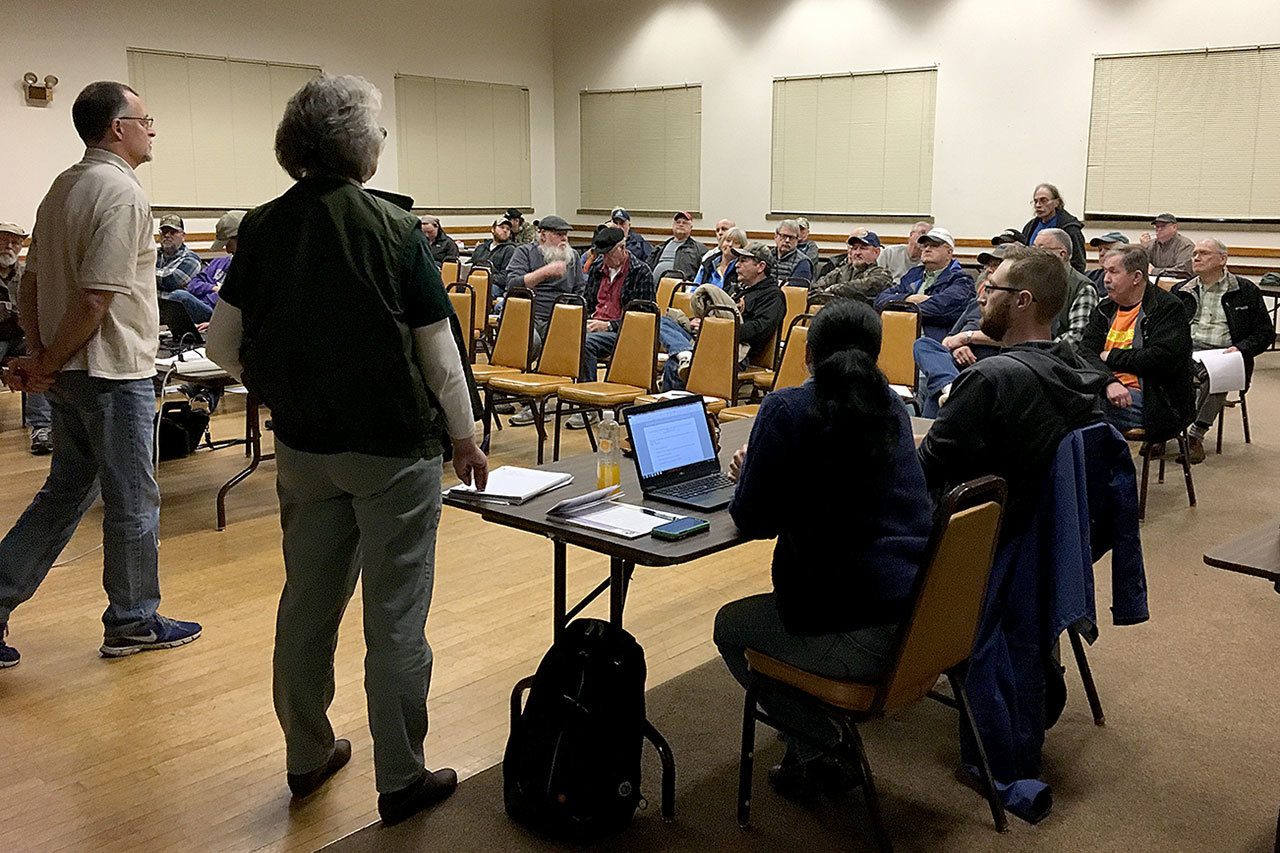Biologists for Willapa Bay and Grays Harbor salmon fisheries agree, everyone is in for another tough season in 2017.
Commercial and recreational fishermen, guides and concerned citizens attended a Fish and Wildlife Department meeting at the Montesano City Hall Wednesday to hear the 2017 salmon forecast for Grays Harbor and Willapa Bay.
Region 6 (coastal Washington) fish program manager Annette Hoffmann, who has previous fish management experience in Region 4, which covers northern Puget Sound, but has only been in the Region 6 position for a few weeks, opened the evening by saying, “I know there’s a lot of uncertainty and anxiety among people nervous about what the outcome is going to be for fishing opportunities. I think for us as a group there is a way to move forward and I hope you will work with us to get there.”
Region 6 Director Larry Phillips — who himself is new to his position — was also on hand, and said of the region’s salmon management, “We have a plan in place, a direction we are heading and a landing place in mind. I hope you can help give us some assistance in getting there.”
Fall Chinook and coho forecasts for Grays Harbor were not available for this meeting. Later, during the public comment period, Grays Harbor biologist Mike Scharpf said the wildly different numbers created by the state and the Quinault Indian Nation forecast models have delayed the overall spring Chinook and coho forecasts. When pressed about how much of a difference there was between forecasts, Scharpf said, for example, the state model has more than 100,000 natural origin coho returning to the Chehalis in 2017; the Quinault model — a different model altogether from the state’s — has less than 30,000.
As for the other runs, Scharpf had a spring Chinook forecast of 1,300 fish, which is below the escapement goal of 1,400 fish. The chum forecast is a little less bleak, with 30,100 naturally occurring and 1,200 hatchery fish expected, 10,000 and 700 above the escapement goal respectively.
“Preliminary information suggests that escapement goals will not be achieved for naturally occurring Humptulips coho or Chehalis Chinook, but will be for Humptulips Chinook,” he said.
As for seasons, “The Grays Harbor Control Zone will be closed after Aug. 1 due to not making our escapement goals three out of the last five years,” said Scharpf. Priority will be placed on recreational fisheries for spring Chinook with an opener no later than May 1, but since the run is predicted to be so small and state policy limits the number of fish taken by all fisheries to 5 percent of the total run, there will be limited opportunity.
Willapa Bay biologist Chad Herring said wild Chinook are expected to return “a couple of hundred fish below the average” in 2017, 4,178 fish. Hatchery Chinook will also return in slightly lower than average numbers, just over 34,300, for a total of a little more than 38,500 Chinook expected.
The coho situation remains grim. “Not a great number,” said Herring. The forecast calls for 36,720 naturally occurring coho and 54,998 hatchery fish for a total run of 91,718.
Chum remain the bright spot after last year’s banner run. “We are well above escapement if this run comes in as expected,” said Herring. “We could make escapement goals and get out of the penalty box.” The penalty box is the limiting of total take of any run that doesn’t make escapement plans three out of five years to five percent. The total chum run, including just under 1,300 hatchery fish, is expected to top 57,700 fish.
The next stop in the North of Falcon public meeting schedule is Feb. 28 at the Natural Resources building in Olympia, where preliminary seasons will be discussed. The Grays Harbor Advisory Group will have a public meeting March 9 in Montesano; the Willapa Bay Advisory Group will meet March 14 at the Raymond High School library.



